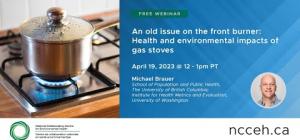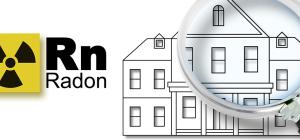
Carbon monoxide in long-term care facilities

Carbon monoxide (CO) is an odourless, colourless, and non-irritating gas that is harmful to humans. As a by-product of incomplete combustion, CO is produced by fuel-burning appliances including boilers, furnaces, fireplaces, kitchen stoves, and laundry dryers. Cigarette smoke and vehicle exhaust also contribute to indoor CO levels. At low levels of exposure, symptoms can include headache, nausea, and shortness of breath. Higher levels or chronic low-level exposure can result in irritability, drowsiness, or dizziness. Dangerously high levels can result in unconsciousness, convulsions, and death.
In 2010, a CO exposure incident at a long-term care facility (LTCFs) in Saskatchewan resulted in 31 individuals being sent to hospital and contributed to three deaths (CBC News, 2010). Subsequently, Saskatoon Health Region implemented a policy to identify, monitor, and respond to elevated indoor CO in these facilities (CBC News, 2016).
To advance the development of a health-protective CO management strategy in LTCFs across Canada, the NCCEH/BCCDC convened a consultation with experts to discuss the development of a framework and practical means for implementation (Barn and Kosatsky, 2013). We then performed an evaluation of Saskatoon Health Region’s CO monitoring and reporting policy that indicated its utility in the prevention of CO exposures in LTCFs (Fong, 2016). Finally, tools were developed to increase the capacity for health agencies to implement the Carbon Monoxide (CO) Monitoring and Response Framework in LTCFs. With support from Health Canada, this framework was developed through consultations between NCCEH/BCCDC and Saskatoon Health Region (Fong, 2016). The Framework provides a method to assist long-term care facilities in ensuring indoor CO is below Health Canada’s maximum exposure limit of 10 ppm over 24 hours, which is intended to protect the entire population from the health effects associated with short-term and long-term exposures to CO (Health Canada, 2010). Implementing the Framework in long-term care facilities is intentional as residents include those with underlying heart conditions that increase their susceptibility to the harmful effects of CO.
NCCEH resources
- A review of the experimental evidence on the toxicokinetics of carbon monoxide: the potential role of pathophysiology among susceptible groups (Barn et al., 2018)
This peer-reviewed article examines susceptibility-specific modeling that accounts for physiological deficits that may alter CO-carboxyhemoglobin relationships. A review of available literature found that there is limited human evidence on the effects of physiological deficits relevant to CO kinetics to support indoor air CO guidelines.
- Evaluating the Carbon Monoxide Monitoring and Response Framework in Long-term Care Facilities: A Brief Guide (2017)
This guide provides an overview of the design, approach, and key indicators useful for evaluating the implementation of the CO Monitoring and Response Framework in Long-term Care Facilities.
- Guide for Implementing the Carbon Monoxide Monitoring and Response Framework in Long-term Care Facilities (2016)
This guide provides an overview of the CO Monitoring and Response Framework, rationale for implementation, steps for implementation, and sample resources. It is intended for public health practitioners, facility/property maintenance managers, risk managers, occupational hygienists, clinicians, or other persons working at long-term care facilities (residential care facilities, nursing homes, seniors’ residences, care occupancies, etc.) who would like to implement a program to reduce the risk of indoor carbon monoxide exposure to residents and staff.
- Carbon monoxide monitoring and response in long-term care facilities (2016)
This presentation provides an overview of the Carbon Monoxide Monitoring and Response Framework and can be used to train staff during implementation. It should be used alongside the “Guide for Implementing the Carbon Monoxide Monitoring and Response Framework in Long-term Care Facilities”.
- Evaluating a Novel Carbon Monoxide (CO) Monitoring Framework in Long-Term Care Facilities (2016)
This poster highlights the findings from an evaluation of Saskatoon Health Region’s carbon monoxide monitoring policy in 10 long-term care facilities.
- Carbon monoxide detectors: A powerful, underused way to protect lives (2016)
This article describes the use of CO detectors as a potential public health intervention, especially among individuals most susceptible to the harmful effects of CO.
- Preventing carbon monoxide exposures in long-term care facilities (2015)
This article provides an overview of the issue of CO in long-term care facilities, gaps in current CO detector technology, and the development of a framework to prevent CO exposures in long-term care facilities.
- Carbon Monoxide Monitoring in Long Term Care Facilities and Hospitals, Saskatoon (2013)
This stakeholder consultation meeting was convened to promote the development of a carbon monoxide monitoring framework for long-term care facilities and hospitals. It contains presentations related to a CO exposure incident at a long-term care facility in Saskatoon, SK, modeling of the kinetics of CO, and a meeting report.
Selected external resources
- Residential Indoor Air Quality Guideline: Carbon Monoxide (Health Canada, 2010)
This Canadian guideline provides the maximum indoor residential exposure limits for CO.
- Preventing carbon monoxide poisoning. Information for older adults and their caregivers (U.S. Environmental Protection Agency, 2009)
This factsheet provides an overview of CO and recommendations for older adults with underlying health conditions which make them more susceptible to the effects of CO.
- Determination of carboxyhaemoglobin in humans following low-level exposures to carbon monoxide (Gosselin et al., 2009)
This study uses toxicokinetic models to estimate the lowest ambient CO concentrations and exposure durations which would lead to the maximum levels of carboxyhemoglobin (COHb) in blood recommended by Health Canada, US EPA, and WHO.
- Effects on health of prolonged exposure to low concentrations of carbon monoxide (Townsend and Maynard, 2002)
This report discusses the potential public health implications of low-level exposure to CO and the effects on the heart and brain.
This list is not intended to be exhaustive. Omission of a resource does not preclude it from having value.






